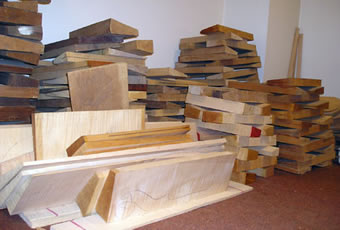The size of violins start at 1/32nd and work up to full size. You need to buy a violin which fits your arm length. Usually by the age of 13-15 you will get a full sized violin,but before that you will buy a violin everytime you grow out of the smaller one.
va lee lo geogblog
this is my little blog about the geography of violins
Friday 27 September 2013
Thursday 26 September 2013
Manufacturing
Generally the cheaper violins are made in large quantaties, in a factory. These factories are usually situated in China or India because of the cheaper labour. The more expensive violins are made out of a more expensive wood and are hand made and they have a much better sound quality than the factory made ones.
The cheaply manufactured violins price ranges from 200 euro to 400 euros. The more expensive ones have a much wider range, depending on the quality of the wood and sound and the history of the actual violin. They range from around one grand to maybe around twenty grand. Most students buy the cheapest violins around because they are not performing, but once they start to perform they like to have a better sound on their violin and invest in a more expensive violin.
Personally myself I bought a cheaper violin because I am not interested in performing and just have it as a hobby.
The cheaply manufactured violins price ranges from 200 euro to 400 euros. The more expensive ones have a much wider range, depending on the quality of the wood and sound and the history of the actual violin. They range from around one grand to maybe around twenty grand. Most students buy the cheapest violins around because they are not performing, but once they start to perform they like to have a better sound on their violin and invest in a more expensive violin.
Personally myself I bought a cheaper violin because I am not interested in performing and just have it as a hobby.
Tuesday 24 September 2013
The Bow
The bow of the string is used to create the smooth sound from the strings on the violin. The frame of the violin is usually made from pernambuco or brazilwood. The part of the bow which touches the violin is are the horsehairs. They are stretched long in the frame to create the tension required to make a noise. So that the hairs on the violin dont wear there is a knob at the back of the bow which allows you to tighten and loosen the hairs of the bow.
So that the hairs of the bow do not slip and squeek on the violin strings rosin is applied to the hairs of the bow regularly. This rosin is made up from resin which is collected from pines. This resin is then put into a cake shape to allow easy application to the bow. This rosin last for a very long time, I've been playing violin for ten years now and the only reason I have ever had to buy a new one is because I've dropped it or stood on it and it smashed, it is quite sticky so that is not good when it happens.
The bow has only a few components, these include the frog, the horsehair, the stick and the head.
Monday 23 September 2013
The Violin Strings
The violin strings today are made up of a synthetic core which a metal possibly alluminium or steel is wound around. The metal which is wrapped around is very thin a delacate but once wrapped around becomes strong and durable. The violins E string is usually made up of solid steel because it is the thinist of the four strings.
The string with the highest pitch is the E string it is at the right side if the violin.
In order of highest pitch to lowest pitch is E,A,D,G. The E string is the most delacate of the strings and is the easiest to snap, I would know this because on maybe too many occasions I have snapped my E string, and i have only snapped my A string once which at he moment is being held in place by a little knot because the ball has snapped off the end.
To keep the strings in place at the end of the violin, a small ball is attached to the string.The piece which holds the ball in place is called the tailpiece, this is attached then to the violin itself. At the top of the violin are the pegs and scrolls, these are the things which the top of the strings are wrapped around to keep the strings in place and are used to tune the violin aswell.
In between the finger board and the tailpiece is a small piece of wood, it is usually made out of maple. The bridge is used to prop up the strings so that they are not touching the finger board and it also helps with tuning the violin and keeping the frequencies correct.
The pegs at the top of the violin are used for tuning the strings but the little fine tuners at the bottom are used for making the frequecy perfect.
Friday 13 September 2013
Hardwood
Hard wood is made from mostly deciduous trees, they are usually broad leafed trees in temperate or boreal latitudes. Hardwood is most commonly know for being used as floor boards, but it is also used in the making of some violins because it is a cheaper material than the other kinds of wood used.


Subscribe to:
Posts (Atom)

